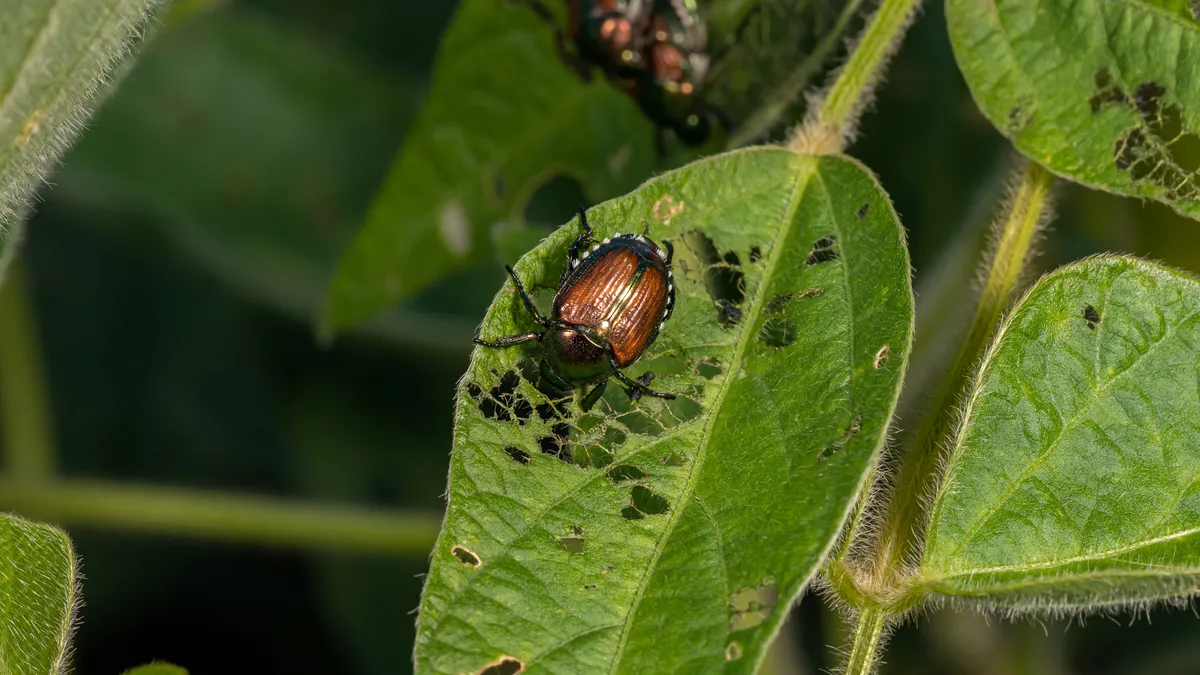A record warm winter could lead to an insect invasion in U.S. farm country, with experts warning that higher temperatures and a lack of snow may create a perfect storm for pests in the Midwest.
Historically, farmers have relied on cooler temperatures to kill off insects and help keep populations in check, according to Dr. Anthony Hanson, an entomologist from the University of Minnesota. However, unusually high winter temperatures have led to the early emergence of crop pests, raising operational risk and concerns for growers this year.
“When it comes to overwintering mortality, this is a year where, overall, for a lot of our pests we're looking at increased risk just because there's very little mortality for a lot of these insects,” said Hanson, who grew up raising crops and keeps honey bees on his family farm.
This last winter was considered the warmest ever in the contiguous U.S.: In places like Minnesota and Wisconsin, temperatures surpassed previous records by more than 2 degrees Fahrenheit.
Those higher temperatures have led to the earlier emergence of pests like the soybean aphid, which can suck out a plant's nutrients and damage crop yields if not properly managed. In Iowa, soybean aphid eggs hatched two weeks ahead of last year, and approximately one month ahead of normal.
For now, it's unclear whether more insects will rear their heads during the growing season. However, with warmer temperatures considered ideal breeding conditions for soybean aphids, experts are advising farmers to check their fields for pests earlier than usual.
“If we're looking at ideal conditions for soybean aphid[s] throughout the growing season, we could get population doubling happening pretty quickly over time,” Hanson said. “When you start with a potentially high population in the spring, that's just indicating we could be at a lot higher risk.”
How farms should think about pest control
Farmers may be tempted to increase their pesticide usage as a preemptive insurance against the insects, but that could also kill off natural predators and worsen the pest problem.
Illinois farmers worry about bugs like Japanese and rootworm beetles. While the situation is different than in Minnesota, the problem is similar — “insect pressures can be greater” with less snow and warmer weather, said Kelly Estes, an entomologist at the University of Illinois, where she coordinates surveys for invasive insects, pathogens and weeds threatening the state’s agriculture.
Broad spectrum insecticides sometimes kill natural enemies, Estes said, causing flare ups of the pest populations they are trying to eradicate. Studies have shown broad spectrum application may also facilitate secondary pest outbreaks.
“Blanket control of insecticides when potentially not needed isn't really recommended,” Estes said. “The insect may or may not be there, [the insecticides] are only going to be useful for a certain amount of time when they're out there, and you do have the potential to take a lot of the natural predators that could be in the area as well.”
Spring temperatures will also be important in determining this year's insect population, Estes said. A late cold snap or wet spring conditions could significantly affect early-season pests such as the corn rootworm.
“As we move into spring in the beginning of the growing season, what happens now can also play a part,” Estes said.
There are steps growers can take to mitigate their risk. One of the most important is scouting fields and routinely checking for pests and disease. Earlier detection can limit crop losses, and allow farmers to make informed decisions about which fields need treatment.
“Our number one thing we're encouraging people to do is to be informed,” Estes said. “But, you really don't know what's going on in your fields unless you get out there and scout.”










